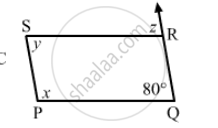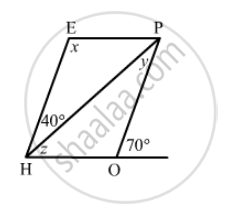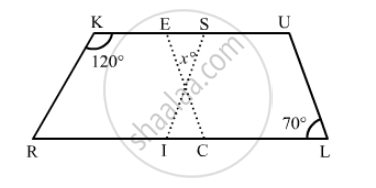Advertisements
Advertisements
प्रश्न
Two adjacent sides of a parallelogram are 4 cm and 3 cm respectively. Find its perimeter.
उत्तर
\[\text{ We know that the opposite sides of a parallelogram are equal } . \]
\[\text{ Two sides are given, i . e . 4 cm and 3 cm } . \]
\[\text{ Therefore, the rest of the sies will also be 4 cm and 3 cm }. \]
\[ \therefore \text{ Perimeter = Sum of all the sides of a parallelogram }\]
\[ = 4 + 3 + 4 + 3\]
\[ = 14 \text{ cm }\]
APPEARS IN
संबंधित प्रश्न
The following figure is parallelogram. Find the degree values of the unknown x, y, z.

The following figure is parallelogram. Find the degree value of the unknown x, y, z.

In the adjacent figure HOPE is a parallelogram. Find the angle measures x,y and z. State the geometrical truths you use to find them.

In the following figure RISK and CLUE are parallelograms. Find the measure of x.

Points E and F lie on diagonal AC of a parallelogram ABCD such that AE = CF. What type of quadrilateral is BFDE?
Which of the following statement is true for a rhombus?
Its diagonals bisect each other at right angles.
Which of the following statement is true for a rhombus?
It is a square.
Draw a rhombus, having each side of length 3.5 cm and one of the angles as 40°.
If the diagonal of a rhombus are equal, then the rhombus is a
In the figure, BEST is a rhombus, Then the value of y – x is ______.
